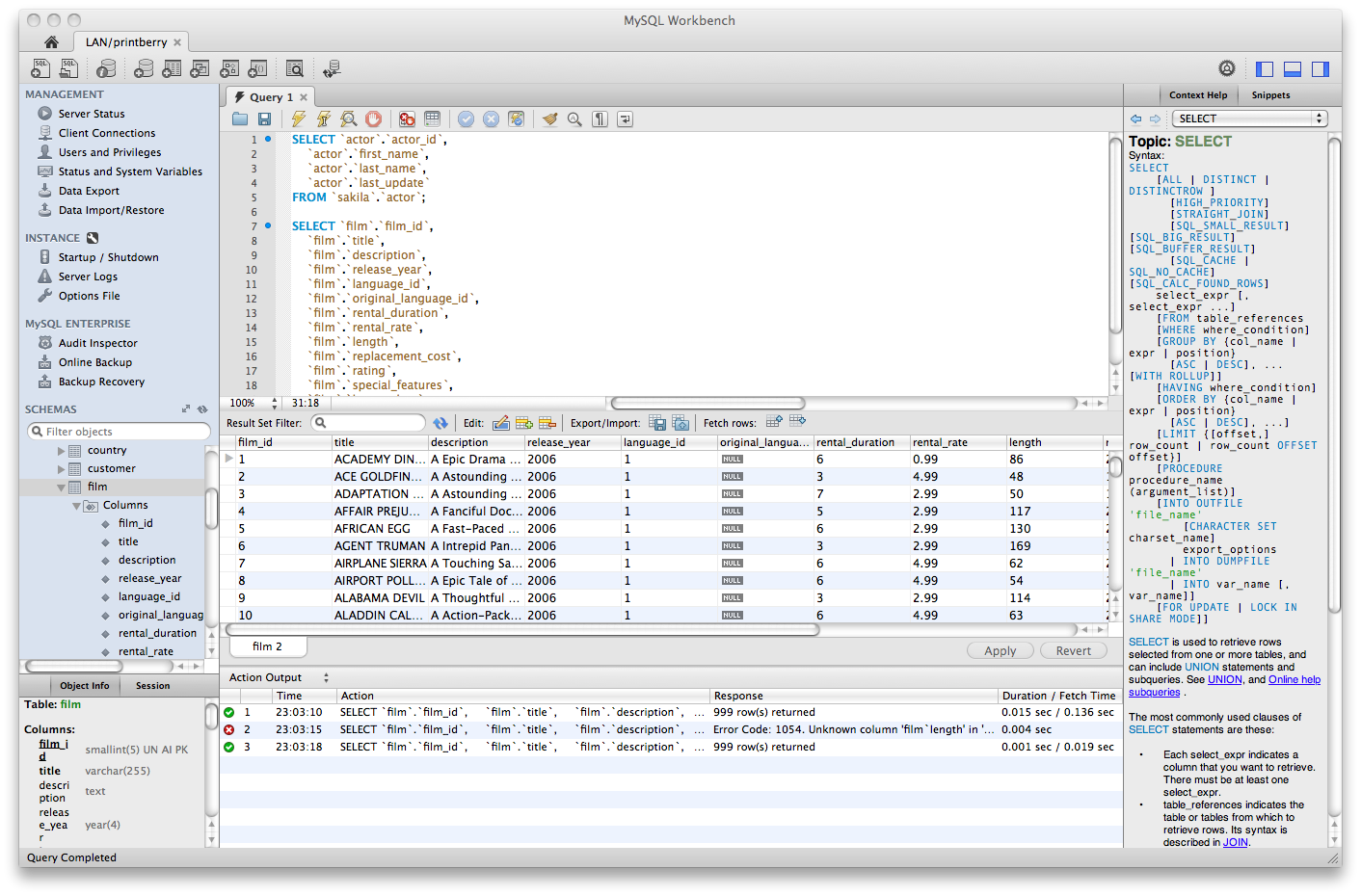
- #Practice oracle sql client for mac how to
- #Practice oracle sql client for mac install
- #Practice oracle sql client for mac code
- #Practice oracle sql client for mac password
If you do not provide the -p parameter in the above command, you may encounter ERROR 1045 (28000): Access denied for user (using password: NO).ĮRROR 1045 (28000): Access denied for user (using password: NO).Type '\c' to clear the current input statement. Other names may be trademarks of their respective

Oracle is a registered trademark of Oracle Corporation and/or itsĪffiliates.

Server version: 8.0.23 MySQL Community Server - GPLĬopyright (c) 2000, 2021, Oracle and/or its affiliates.
#Practice oracle sql client for mac password
After you input the correct password ( the root password which you set during the MySQL installation ), you can enter the MySQL interactive console.
You can run the command /usr/local/mysql/bin/mysql -u root -p to connect to the MySQL database server as below. #Practice oracle sql client for mac install
After you install the MySQL database server, it is installed in the directory /usr/local/mysql. #Practice oracle sql client for mac how to
How To Connect MySQL Server In Command-Line. ) ENGINE=InnoDB AUTO_INCREMENT=21 DEFAULT CHARSET=utf8 COLLATE=utf8_bin 6. `email` varchar(100) COLLATE utf8_bin NOT NULL, `password` varchar(100) COLLATE utf8_bin NOT NULL, `user_name` varchar(100) COLLATE utf8_bin NOT NULL, Then click execute button(the first lightning icon ) at the top toolbar of the SQL window to execute the code.
#Practice oracle sql client for mac code
To execute the below DDL code, just click Create a new SQL tab for executing queries button ( ) at MySQL workbench toolbar top left corner to open a SQL command execute window, and then copy below code into it. Below is the table DDL SQL code, you can also run it to create this table. In our MySQL JDBC examples, we always use a table user_account, so we should create this table use MySQL workbench.
Then select desired Object Rights, DDL Rights, or Other Rights checkboxes at the bottom, then click Apply button to apply the selected privileges to the created user. You can select all databases, or special databases either by matching string pattern or exactly string match. Click Schema Privileges tab to assign MySQL database (schema) privileges to the user by click Add Entry… button. Click Administrative Roles tab to select related roles and assign them to the newly created MySQL user. Input user name and password in the new panel. Click Add Account button at the bottom of the right panel. Click Users and Privileges menu item in the left MySQL workbench panel. Create MySQL User and Assign Privileges To The User. Right-click user_account table, click Select Rows – Limit 1000 menu item to open edit table data dialog in the right panel to insert data into the table.Ĥ. Then click table row to add one column, input column name, select datatype, and other column options(Primary Key, Not Null, Unique, Auto Increment, Binary, etc). Right-click the Tables item under dev2qa database then clicks Create Table… menu item to create a table. Click Apply button to create the database. Input MySQL Schema name (database name) and select database character set and collation ( usually use utf8 and utf8_bin). 
Click the Create a new schema in the connected server button to create a database. Connect to the local MySQL database server. Click the downloaded dmg file to install it. Download MySQL Workbench community version. Manage MySQL Database With MySQL Workbench. Then you can start, stop and configure the MySQL server in it.ģ. Click the MySQL icon to open the MySQL configuration dialog. Now MySql server has been installed successfully. And click the Finish button to complete the MySql server installation. After installation, it will display Configure MySQL Server dialog, input the root user’s password. Click the Next button in the wizard dialog until go to the Change Install Location… dialog, then click the Install button to install it. Click the downloaded dmg file to open the MySql server installer package. Download MySql Server community version for macOS.







 0 kommentar(er)
0 kommentar(er)
